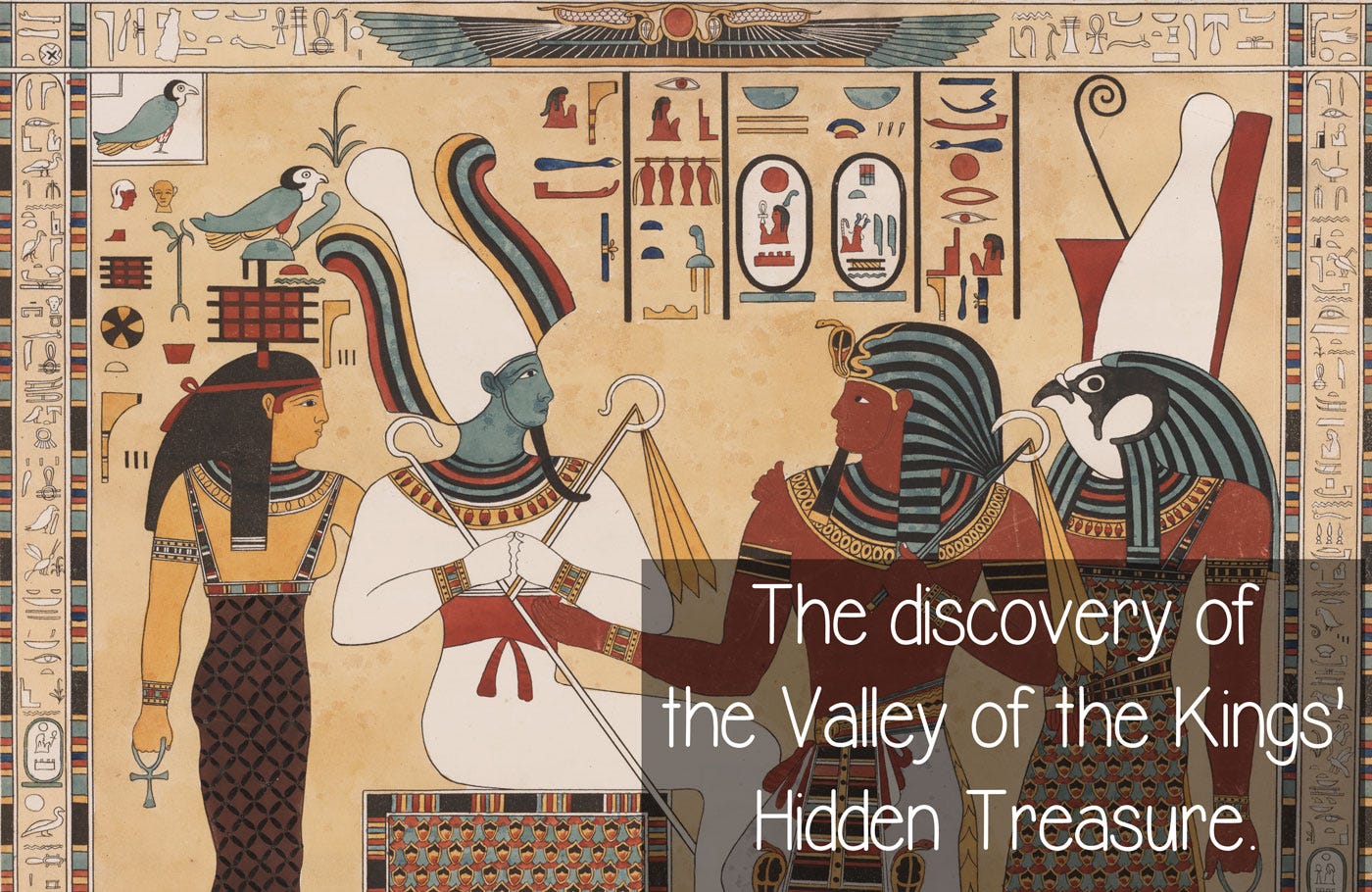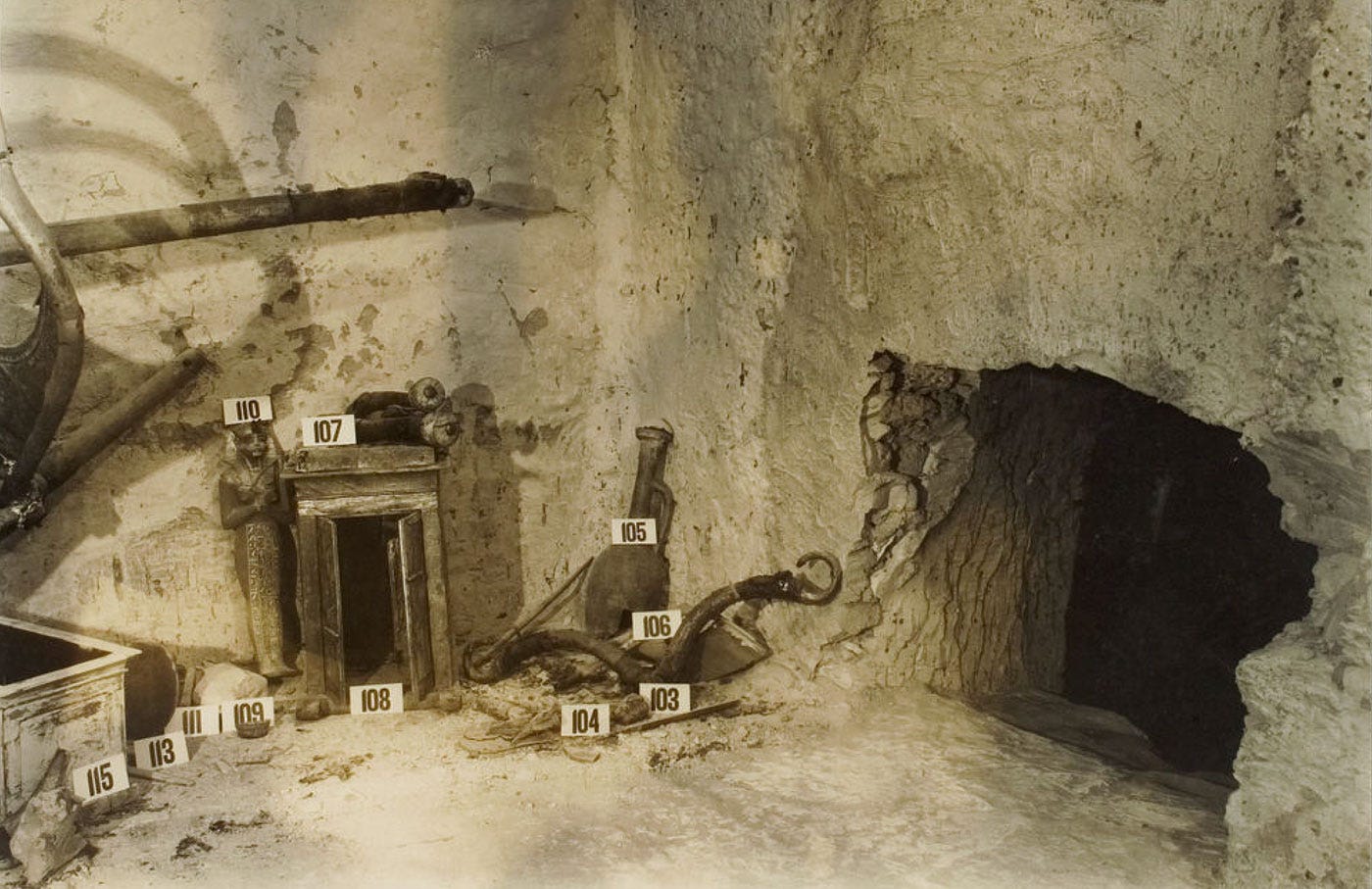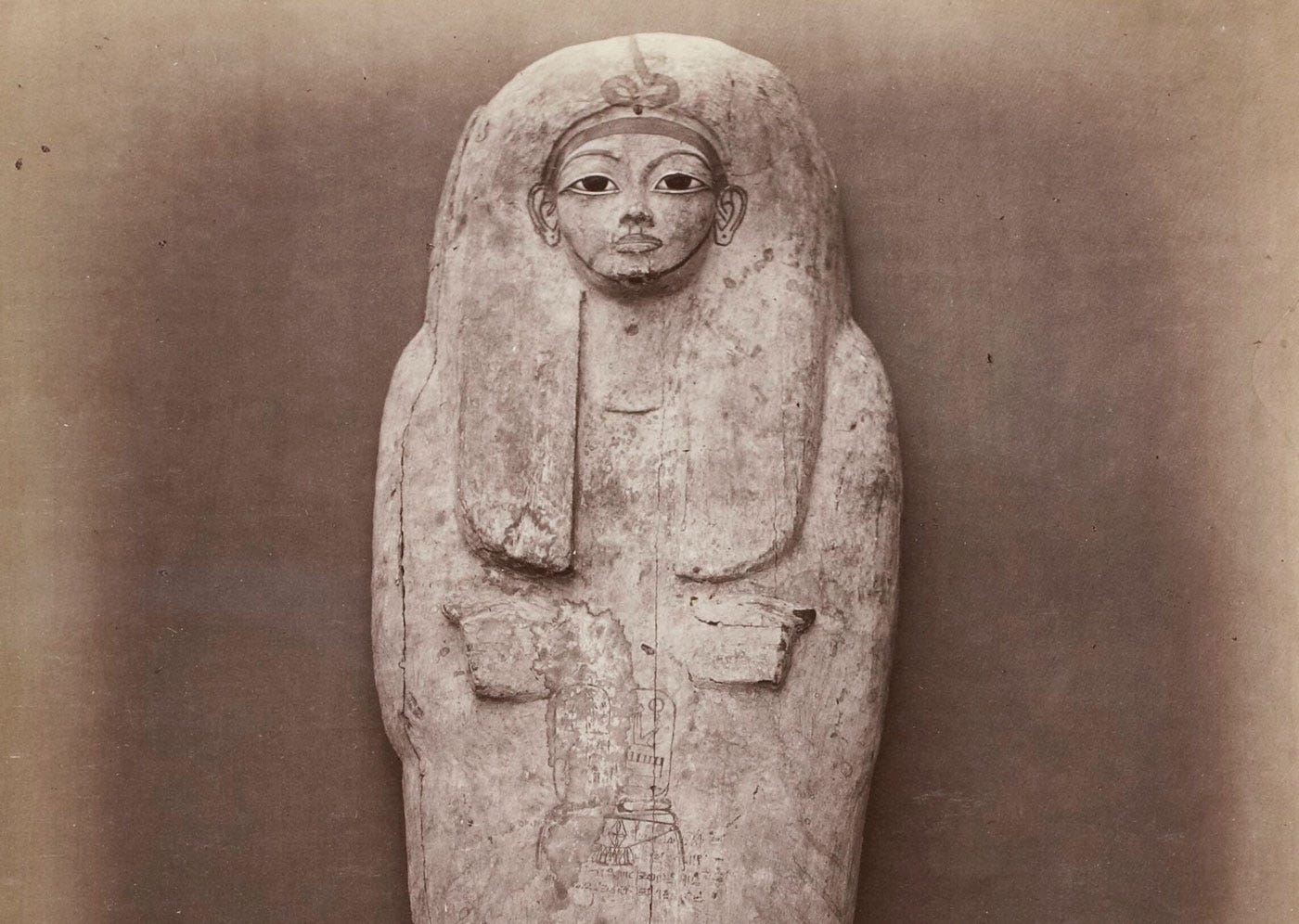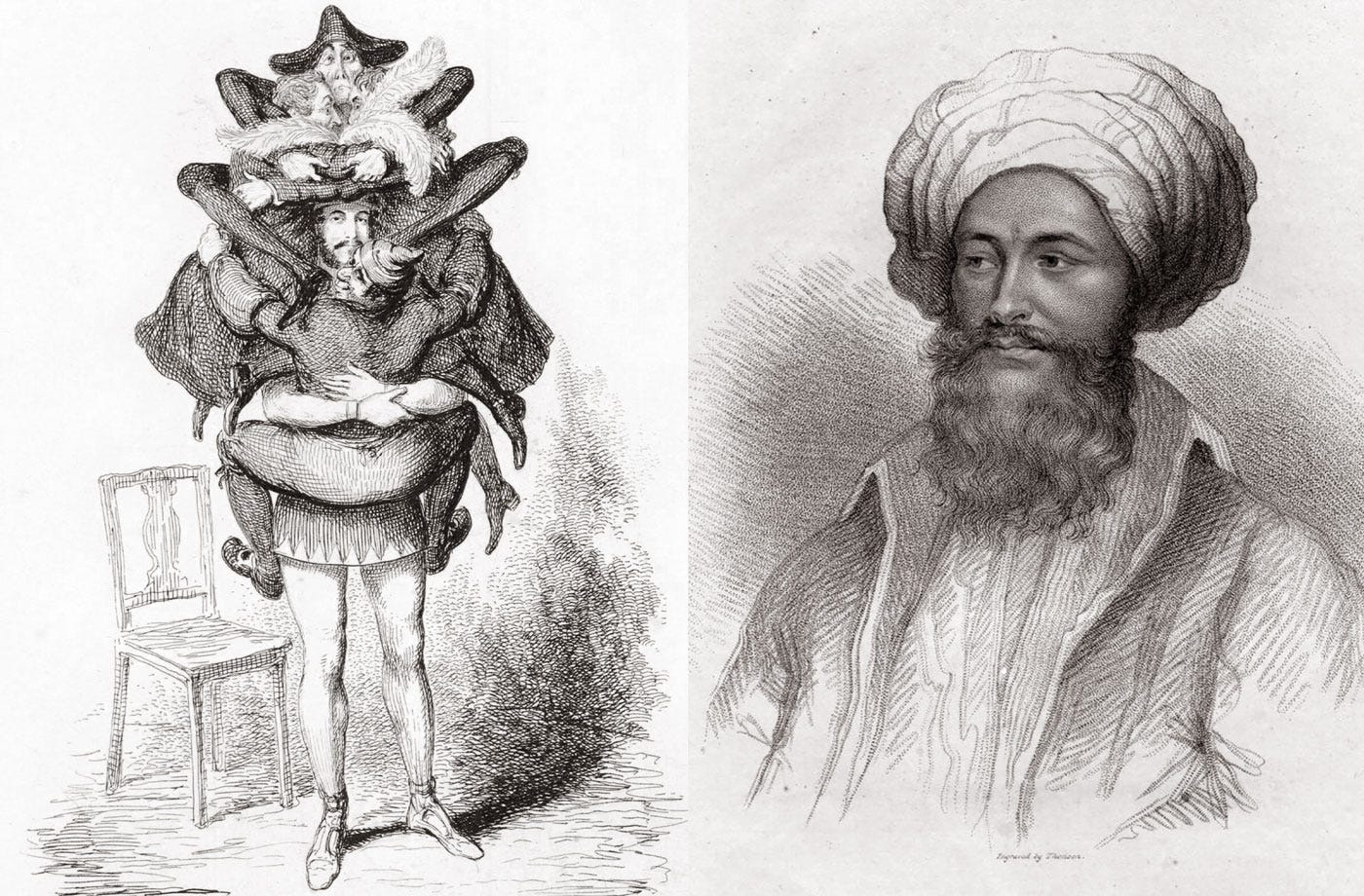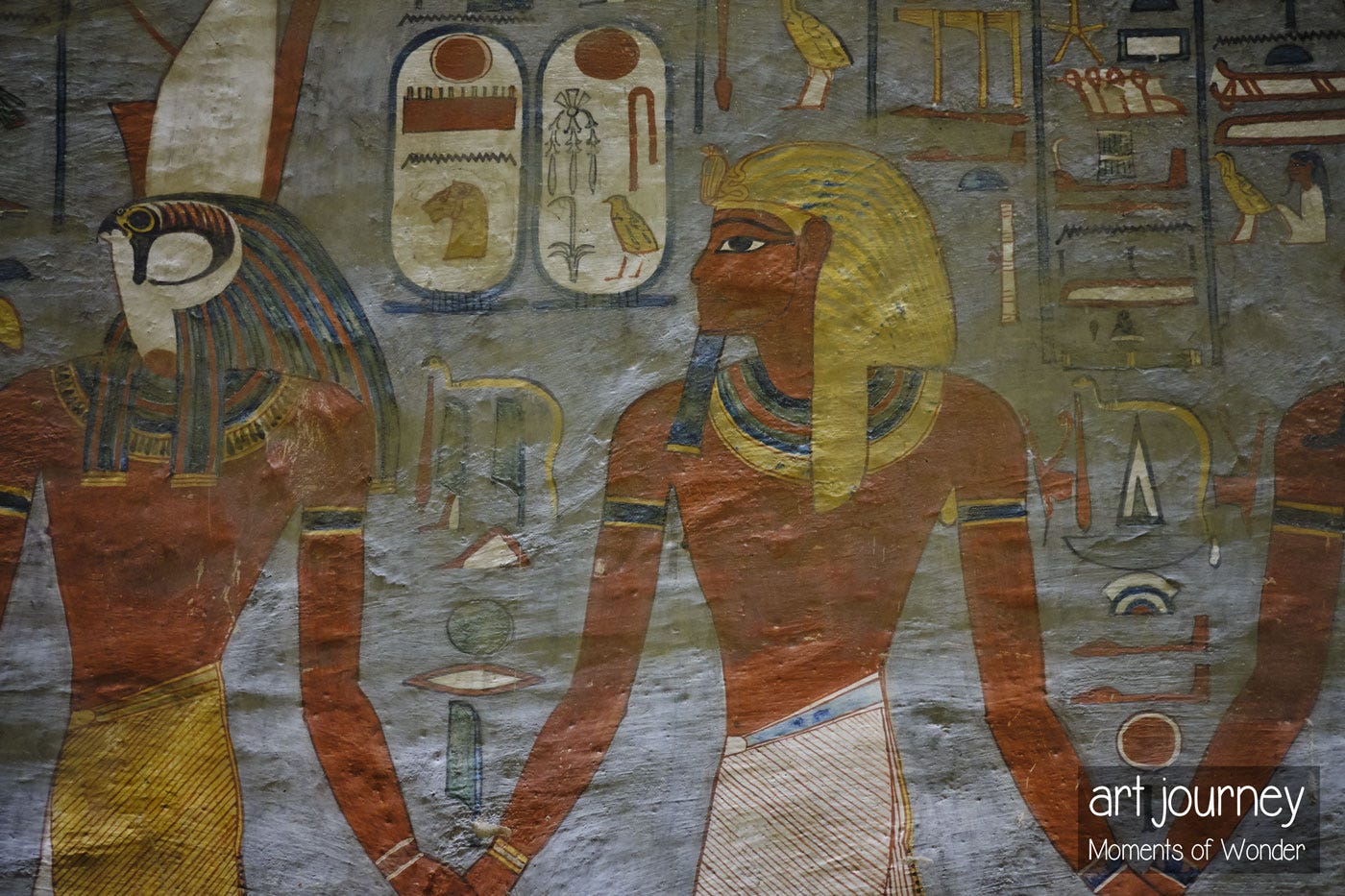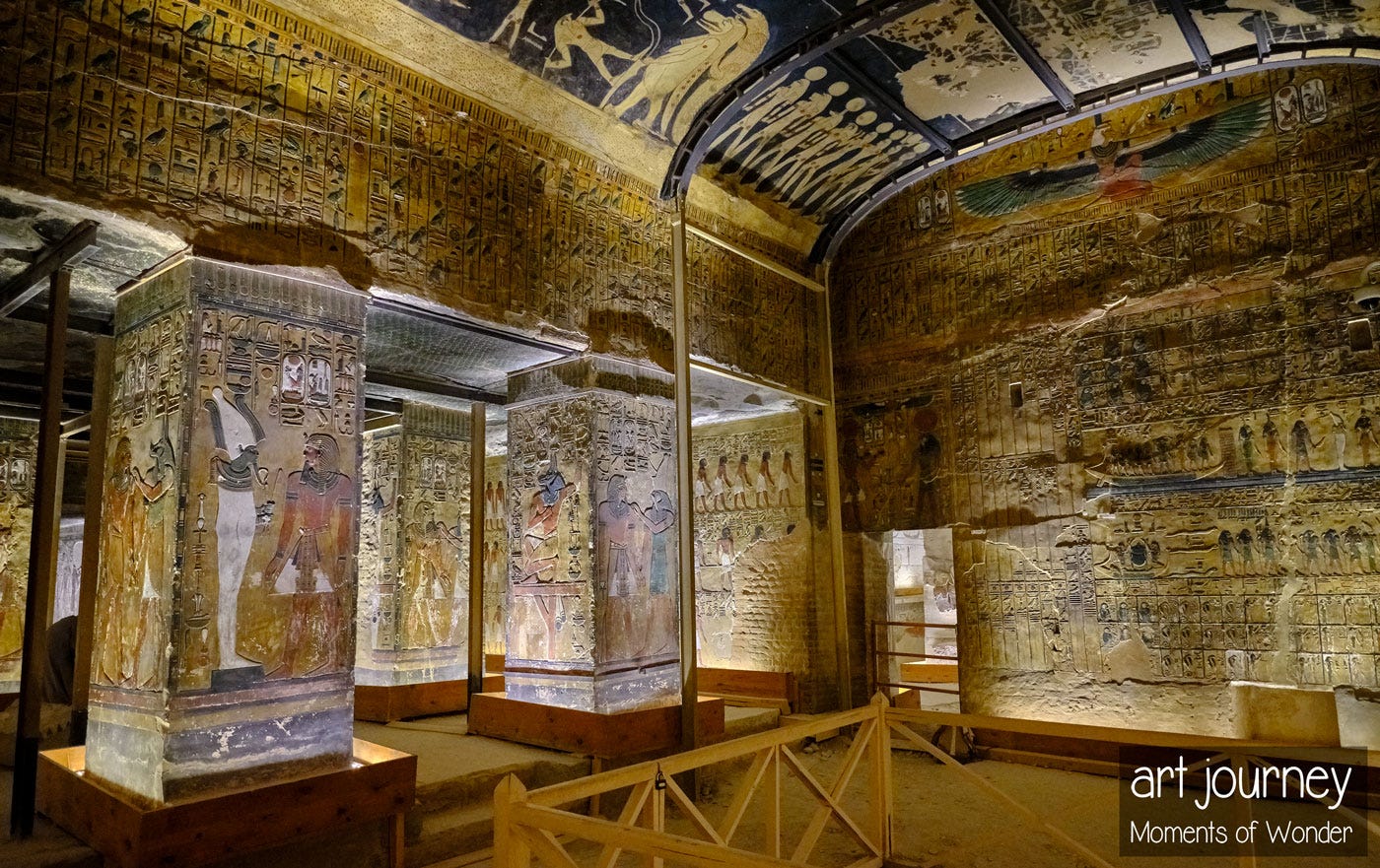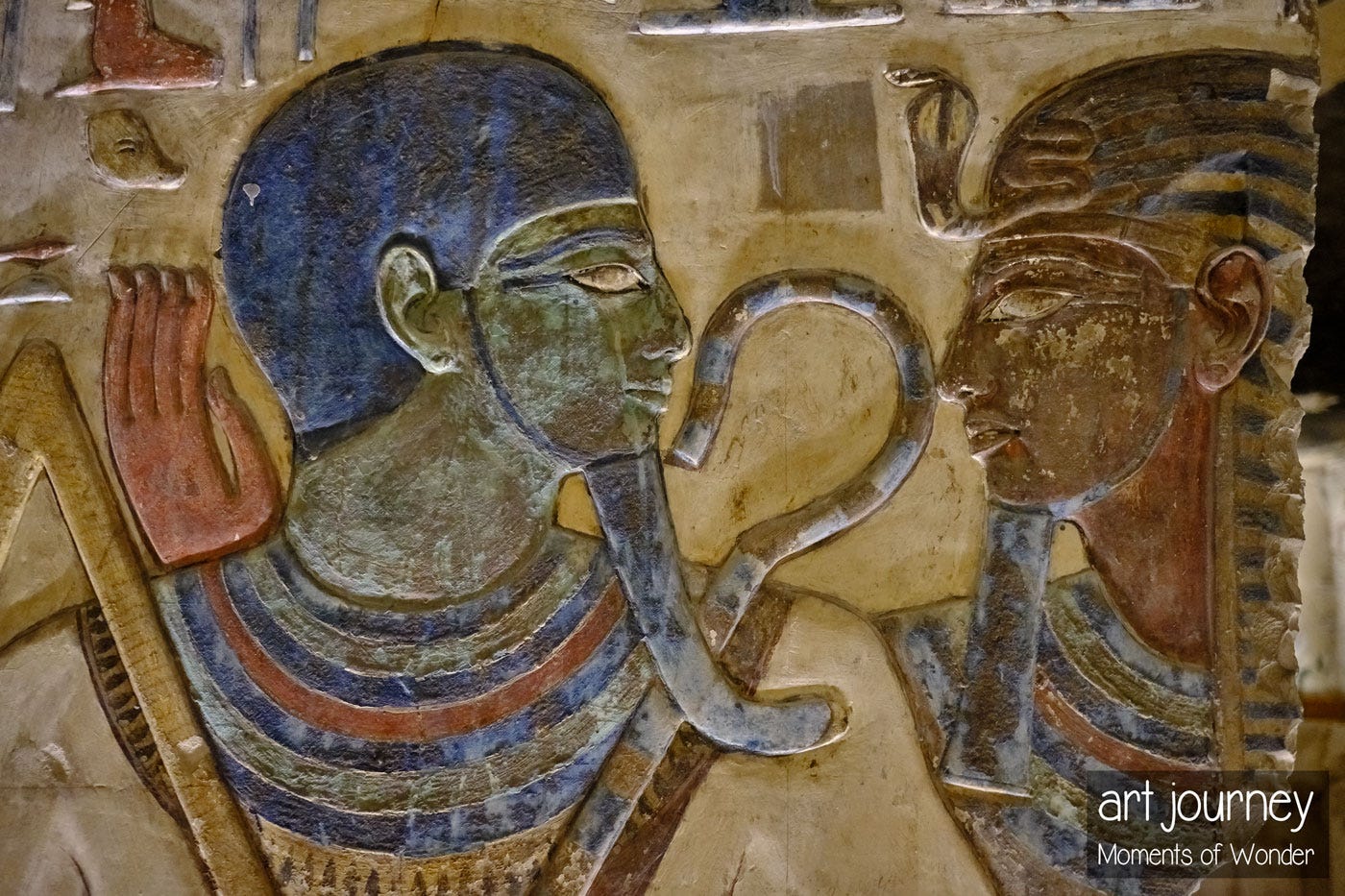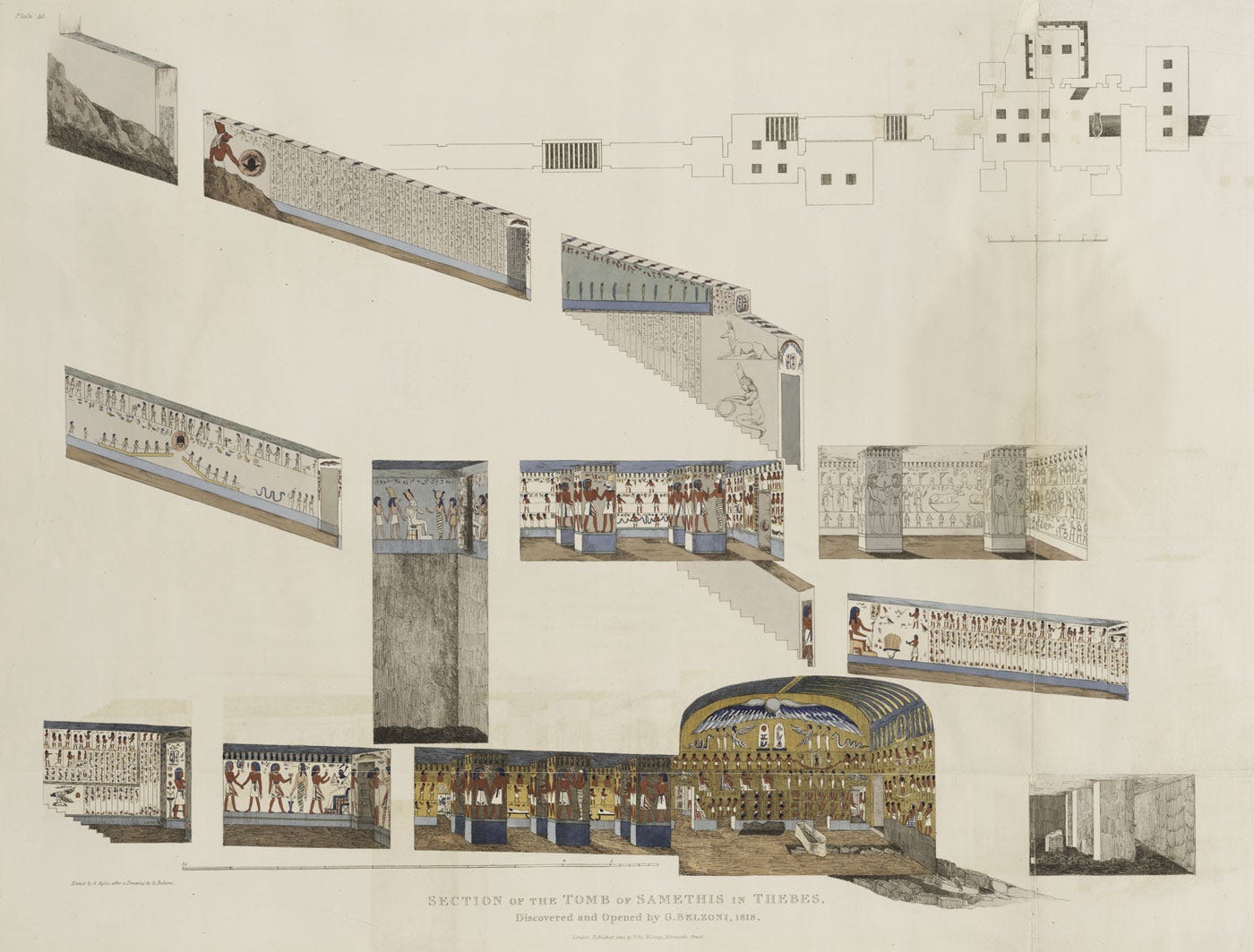The Valley of the Kings' Hidden Treasure, Pt. 2.
The discovery of the tomb of Pharaoh Seti I in 1817.
Dear reader, you are interested in ancient Egypt and probably assume that Tutankhamun's tomb is the only intact Pharaoh's treasure. That is perfectly natural, as countless documentaries have told you about Egypt. Yet, this is untrue.
- To begin with, Tutankhamun's tomb is not intact as it has been twice plundered.
- It is not the only intact Pharaoh's treasure, as THREE Pharaoh's tombs and hundreds of gold objects were found intact, and no one seems to know yet.

In Cairo's old museum, when people queue up to see Tutankhamun's treasure, they can see, through glass, another gold mask, a solid silver sarcophagus, and hundreds of solid gold artifacts. Most cannot be bothered to see the Pharaohs' Treasures right before them.
The reason is fame, or lack of it. There are only a few steps to take, but visitors rush because a bus awaits, and the impressive treasures belong to Pharaohs who were not famous.
Understanding why these treasures are overlooked will be done in the forthcoming story.
Tomb plunder in ancient Egypt
The Pharaonic civilization lasted three millennia. The number of recorded Pharaohs is over 340. Yes, 340 Kings, including the 'minor' Kings, still means 340 Pharaohs' tombs.
Including Tutankhamun—even though it is not intact, its treasure is astounding—there were three intact Pharaoh's tombs and two reasonably intact tombs discovered.
Five out of 340 equals around 0,015%. In other words, 99,98% of royal tomb treasures are missing. The story of millennia of plunder in ancient Egypt is fascinating and for a future story.
That was the context for contemplating the distance between famous and important masterpieces and the difficulty of knowing what to see when planning to visit Egypt.
It also helps us wonder about the survival of this Hidden Masterpiece.
Seti I's tomb survival
His illustrious son, Ramses II, also built an impressive tomb, which has been badly wrecked by flooding. There were 11 different Pharaohs named Ramses. The last tomb ever carved in the Valley of the Kings, for Ramses XI, was not even finished.
The economic collapse meant a serious risk for the mummified Kings covered with gold from head to toe.
Ramses I, Seti I, and Ramses II share a tomb
For a moment, Seti shared his tomb with his father, Ramses I, and son, Ramses II. Then, the priests of Amun decided to hide the Pharaohs—minus their gold—and used Seti's tomb for a time as a hideout.
For nearly 3,000 years, the tomb of Seti remained untroubled. No tourist—the Valley of the Kings already was a tourist site during the Greek and Roman eras—and no thief lit the darkness inside.
Archaeology's Wild West
Archaeology was not born in one day. It started in the 1750s with the discovery of Pompeii's ruins. The past was attacked with pickaxes in search of treasure, and anything that did not have financial value was thrown away.
Then Napoléon invaded Egypt with 160 scientists in tow. Contrary to internet lore, he returned to France empty-handed. But now, the Europeans were fascinated with ancient civilization, and Egypt was eager to gain knowledge to help modernize the country and economy.
The Pasha of Egypt sought out experts to help with irrigation, how a circus strongman, who had studied hydrology, found his way to Egypt.
Belzoni, the circus strongman who discovered Seti's tomb
Reality is often more interesting than Hollywood stories—case in point, Giovanni Battista Belzoni.
The son of an Italian barber, he first considered the priesthood and learned hydrology.
And Belzoni was a giant. This is how he became the 'Great Belzoni,' a sought-after circus sensation in Britain, able to carry twelve people at once.
The circus strongman heard of Egypt's need for experts and traveled there to propose his solutions to field irrigation. That failed, but the British consul offered him a job: to remove a large statue from Luxor.
Belzoni succeeded in moving the colossus. He then became an explorer and became the first man to enter the Abu Simbel temple. He also discovered six royal tombs in the Valley of the Kings.
That means he wrote major chapters of the birth of Egyptology. However, seen from the present, the issue is that his motivation was not exactly scientific. In his book, he said about searching for papyrus rolls inside tombs:
The purpose of my researches was to rob the Egyptians of their papyri.
Below is his description of his dealings with the locals of the West Bank of Luxor, where hundreds of tombs are hidden:
They always killed a couple of fowls for me, which were baked in a small oven heated with pieces of mummy cases, and sometimes with the bones and rags of the mummies themselves.
It is no uncommon thing to sit down near fragments of bones; hands, feet, or sculls are often in the way; for these people are so accustomed to be among the mummies, that they think no more of sitting on them, than on the skins of their dead calves.
Burning mummies as firewood! The early 1800s were indeed the Wild West for archaeology.
Discovering six royal tombs in the Valley of the Kings
Belzoni set his sights on the stony hills of the Valley of the Kings. It was not a secret that this was the resting place of ancient Pharaohs. Napoléon's scientists recorded 12 tombs, but the ancients mentioned over 40 tombs, so a goldmine was waiting to be found.
But where do you start? Imagine that for millennia, stones tumbled down, accumulating at the bottom of the valley and turning it into a rubble pyramid. Consider that it took Howard Carter five years of digging in the Valley of the Kings to find Tutankhamun.
In only four years, Belzoni found six royal tombs and was the first man to enter the temple of Abu Simbel and Giza's second pyramid! One way to look at his successes is with wonder, the other with horror, as this is the equivalent of a bull rampaging through a china shop.
A fortunate day, entering the tomb of Seti I
We all know Carter's words inside Tutankhamun's tomb: "wonderful things.” One hundred years before, entering Seti's tomb, Belzoni was in awe at the painted walls:
Appearing as if just finished on the day we entered it.
Before descending into the immense tomb, he had to cross a thirty-foot-deep pit. Belzoni understood that the pit was meant to collect rainwater, preventing humidity from damaging the tomb, which is why it was so pristine.
The deeper they went, the more impressive the walls were:
We perceived, that the paintings became more perfect as we advanced farther into the interior.
They retained their gloss, or a kind of varnish over the colours, which had a beautiful effect.
The explorer seeking to rob the Egyptians was so taken by what he saw that he called one area the Room of Beauties.
Belzoni discovered a finely sculpted alabaster sarcophagus in the burial chamber, so thin that it was translucent. But its lid was smashed, the tomb empty of its occupant, and there was no gold to reflect the candlelight.
But rumors of a great discovery reached the governor, who immediately asked to see the treasure of gold and gems. There was none. The treasure was the tomb itself.
Nothing like it can be seen in any part of Egypt.
Another visitor stood in speechless astonishment.
Belzoni cashes in with a copy of the tomb
There was little treasure to sell, and Belzoni was not compensated for his troubles. So, the astounding beauty of Seti's tomb prompted the experienced showman to make an accurate copy of all the painted walls to recreate the tomb in London.
It took one year to copy the walls and take direct wax impressions of the carvings. This was the Wild West of archaeology, before the invention of photography, and Champollion had not yet deciphered hieroglyphs.
The cost of fame
The recreation of Seti's tomb in London was a sensation that made it famous.
Belzoni relied on Dr. Young's inaccurate translation of the hieroglyphs, so the tomb was then known as Psammis' or Belzoni's tomb. In the following years, Egyptologists, collectors, and souvenir hunters wanted their piece of the tomb.
The worst possible way to do this was to copy its pristine plastered, carved, and painted walls. Belzoni had direct wax impressions of the walls, and others applied moist paper or plaster to the walls, tearing out their colors.
Yes, a bit like going to a museum and applying a piece of humid paper to a painting.
The deep shaft protecting the tomb from flash floods was filled, causing humidity to enter the tomb and further damage a masterpiece that had remained intact for three millennia.
Now, dear reader, these stories aim not to make you sad but to transport you into the past to admire marvels. Discussing tomb looting and destruction of antiquities is done to help you have a Moment of Wonder by realizing how rare these masterpieces are.
Regarding rare wonders, here we have an art treasure discovered by a circus strongman. Next, we will meet the real Indiana Jones, a bespectacled archeologist who discovered three intact Pharaohs' tombs filled with treasure just as WW2 broke out.
If you wondered where the gold mask at the beginning of this story came from, you will soon have the answer.
Belzoni, Giovanni Battista, 1778-1823: Narrative of the operations and recent discoveries within the pyramids, temples, tombs and excavations in Egypt and Nubia.
3D digital view of Seti's sarcophagus at the Soane's Museum in London.
How Champollion Deciphered Ancient Egyptian Hieroglyphs





